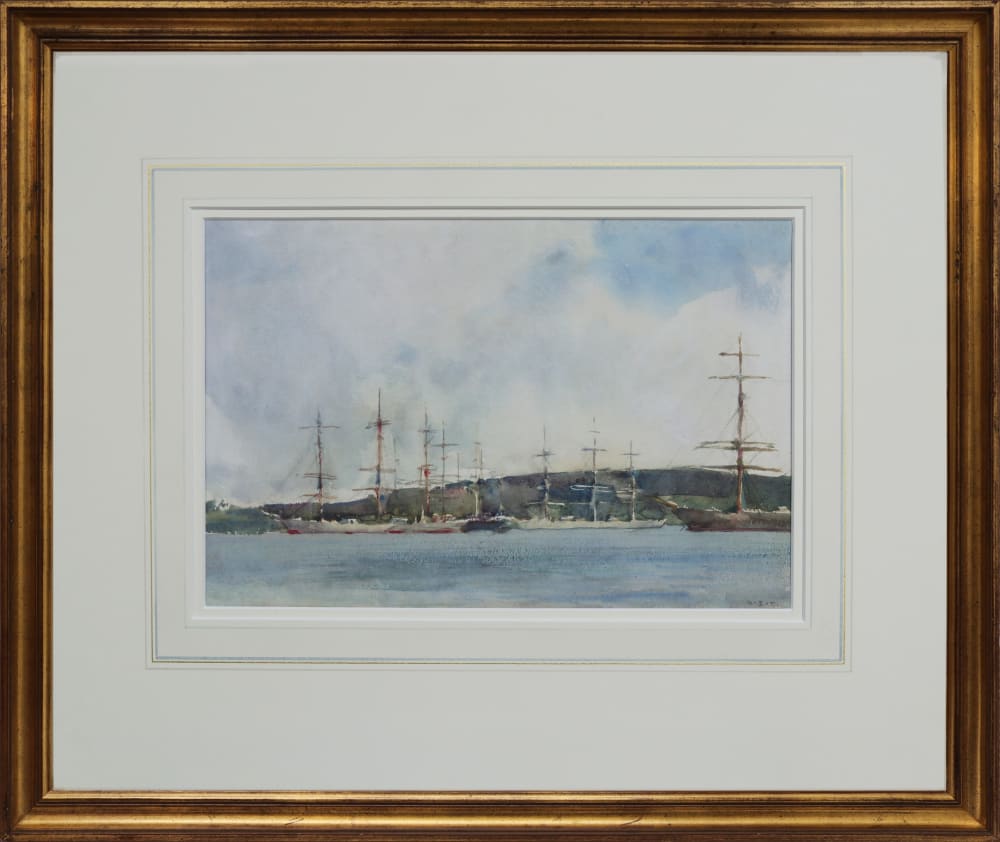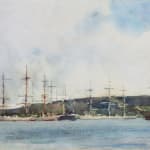
Shpping at Anchor, Falmouth by Henry Scott Tuke
Henry Scott Tuke 1858-1929
Provenance
A private collector in Surrey
Henry Scott Tuke was arguably most progressive as a painter in his watercolour works where he embraced impressionism. His friend and Falmouth peer Charles Napier Hemy, had a tendency to approach watercolour and oil artworks with the same boldness and brushwork. Tuke on the other hand mastered the medium of watercolour and its particular qualities developing a distinctly impressionist style which is entirely different to his approach in oils. Watercolours allowed Tuke more spontaneity and indulged a natural instinct to capture his impression of the subject. His particular interest was in capturing the light on the water. He never used black in his shadows, but an intense ultramarine blue gives them intensity.
In 1904, in recognition of the artists gift and contribution the medium, Tuke was elected a member of the Royal Society of Painters in Watercolour. In his book ‘The Royal Watercolour Society Collection’, Michael Spender describes Tuke’s watercolour technique: “.. the boat is painted with extreme economy of languid washes and transparent brush strokes, which allow the paper itself to do most of the work. This is exemplary use of the underlying whiteness of the paper to convey light and the most subtly coloured shadows through pigmented wash; which surely reveals Tuke’s knowledge of the theories of local colour – that there is no black, only reflected light in natural shadows – put into practise by the Impressionists".
Tuke revelled in the detail of a fully rigged barque or windjammer and since childhood could draw such from memory. His choice of Falmouth was predicated upon the opportunity it presented to capture square rigged sailing ships. Most of Tuke’s marine paintings were, like the present work, of ships anchored in Falmouth’s deep-water harbour through to Carrick Roads. Often the white metal hulls were observed with orange or red rust showing on the waterline. Tuke continued to record tall ships in Falmouth in watercolour up until 1927 and ‘Shipping at Anchor, Falmouth’ is a fine example, with the vibrancy of colour retained from the day Tuke initialed it.




